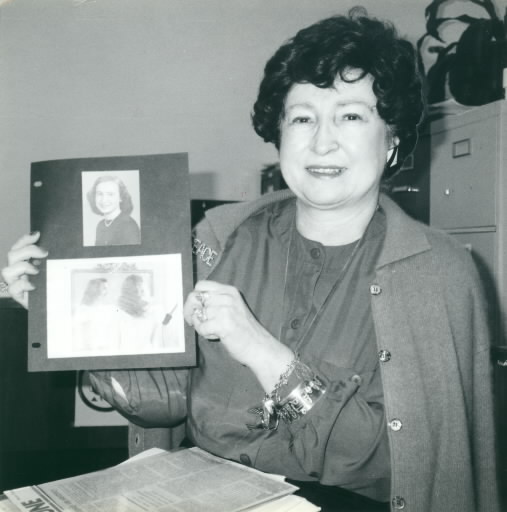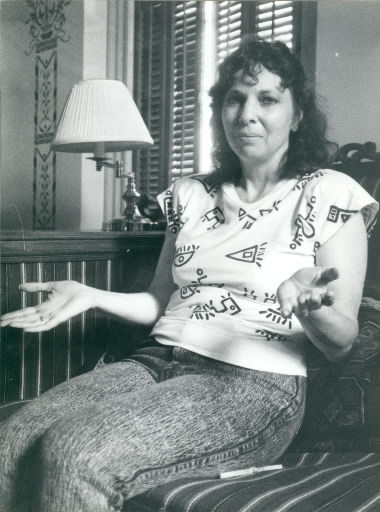3. Victims of Radiation in Hanford
Jan. 3, 2013
Chapter 1: The United States
Part 1: Hanford's Hidden Past
Part 1: Hanford's Hidden Past
The full extent of the damage to the health of nearby residents through radioactive contamination from the Hanford nuclear complex is uncertain.
In February 1989, a public hearing of a congressional committee concerning energy and commerce was held in Washington. The topic under discussion was radioactive contamination. June Casey of Oakland, California, stood up to give testimony. The gathering was silenced by the powerful words of condemnation that sprang from the lips of this mild-mannered woman.
"My body has been subjected to radiation released by the Hanford nuclear complex for a long time, yet I only found out three years ago. I find it impossible to contain my anger at the government's abuse of my trust."
Two months later June received some news which added fuel to her fury—Karen Steele's disclosure of the Green Run experiment of December 1949. The figure 1949 leaped off the page at her.
Born and raised in Portland, Oregon, she entered Whitman College in Walla Walla, Washington, in the fall of 1949. Her joy at being able to study at one of the most prestigious colleges on the West Coast did not last for long, however. Around Christmas the same year the long brown hair that was her pride and joy began to fall out. Worried, she consulted a doctor. He merely laughed and told her she had been studying too hard. When June graduated two years later, she had hardly any hair left and she had begun to wear a wig.
About the time she started teaching, her former roommate at college gave birth to a physically disabled child. June herself eventually married, and after two miscarriages gave birth to a boy. She left work to look after her son, and led a quiet and peaceful life with her husband, a high school principal.
Her life was disrupted when she saw the article detailing how radioactive material had been discharged from the Hanford complex over a period of thirteen years. At the time the world's eyes were focused on the disaster at Chernobyl. "I'll never forget that day," she said. "It was May 11, 1986—Mother's Day." It was not the kind of present she had expected. Shocked, she read on to find that as much radioactive material had been released from Hanford as had leaked from Chernobyl, a month earlier.
Her hair loss, the miscarriages, her roommate's disabled child—all these incidents corresponded with the history of the release of radioactive substances at Hanford. She recalled when she had started to lose her hair; the date was roughly three weeks after the Green Run experiment. Her college was situated only fifty miles southeast of Hanford, well within the affected area, according to the secret documents released by the DOE. "I did some research and found that iodine-131 causes dysfunction of the thyroid gland and miscarriages, as well as birth defects—that made me even more conscious of the radiation in my own body."
June became a member of the National Association of Radiation Survivors, an organization set up to help victims of radiation. This gave her access to a large volume of information which the association had gathered on the effects of the Hiroshima and Nagasaki bombs, and the tests at the Bikini and Nevada sites. Studying this material only served to increase her anxiety: "The damage caused by Hanford is just starting to come out into the open--the government has a lot to answer for."
Millie Smith, aged forty-two, of Olympia, Washington, was another who testified to the effects of radioactive contamination. Her emaciated form lay stretched out on a sofa; cancer was eating its way through her body. "If only I had known about Hanford earlier," she began.
Millie was born in 1947 just south of the Hanford nuclear complex in the town of Pasco. She first began to feel there was something not quite right with her body while at high school, at about the age of sixteen, when she often felt too ill to do gym. She was diagnosed as having a dysfunction of the thyroid gland, and was put on medication.
The years went by, and Millie got married and had a daughter. "My health didn't get any better, though. I still had very little energy—I thought that it was just the way my body was," she said.
In the spring of 1986 Millie read about the contamination in a Seattle newspaper for the first time. The connection between exposure to radiation and her constant lethargy did not occur to her at first. Then came the accident at Chernobyl. "I found out that similar amounts of radiation had been released at Hanford..." Millie was shocked to see reflections of herself in the victims of radiation from Chernobyl pictured on television. Her general feeling of ill health showed no signs of going away, and, believing that she might be suffering from some radiation-linked illness, Millie decided to see a doctor. The news was not good. "We can remove the cancer from your chest, but...," he said, his voice trailing off. Millie was told that it was too late to arrest the progress of the cancer.
Concerned about the effects of being exposed to large doses of radiation, she decided to write to some of her classmates from high school. Of the forty-eight who wrote back to her, twenty-five had thyroid conditions. She found out that a further nine had died of cancer or leukemia.
"It didn't take an expert to realize there was something strange going on—I mean, for that number of people of the same age brought up in the same town to suffer from the same illness…" Her expression hardened. "Nuclear fallout from Hanford is the only possible cause."
The main contaminant released into the atmosphere from Hanford was iodine-131. Once this substance enters the body it accumulates in the thyroid gland, hindering hormone secretion, sometimes also causing cancer. The human body from birth to puberty is particularly vulnerable to its effects. The period up until 1957, when great quantities of radioactive material were being discharged from Hanford, coincides exactly with the childhood and adolescence of Millie and her classmates. Millie expressed grave doubts about a government which deliberately allows the release of dangerous materials and then covers it up. "I can understand the need to keep information secret in the interests of national security," she said. "But if I'd known that I'd been exposed to such large amounts of radiation, I would have had a checkup earlier and been treated earlier. The way things are going at the moment, I'm losing my life to government secrecy."
The experience of Hanford would seem to indicate that national security and the welfare of the people can be mutually exclusive. If Millie Smith and her fellow sufferers have their way, however, the government will not be able to ignore the rights of its citizens for much longer.









